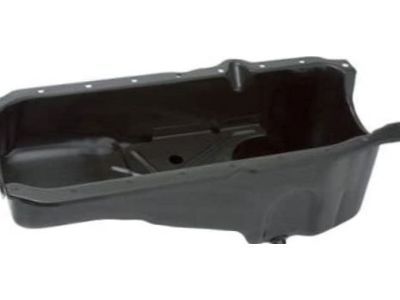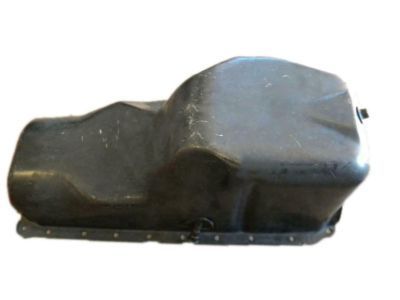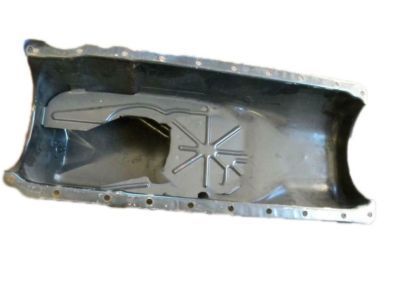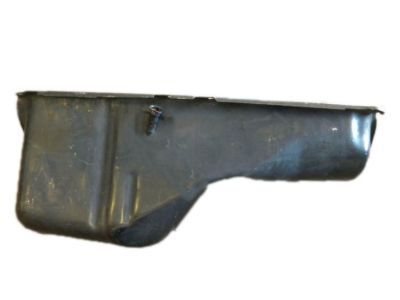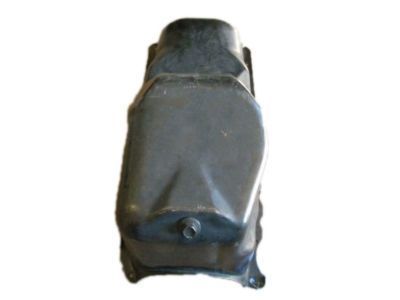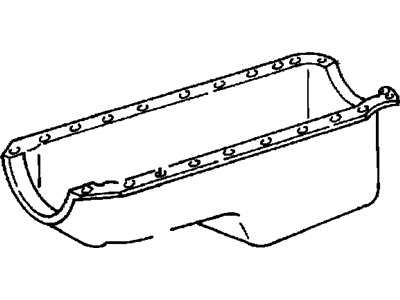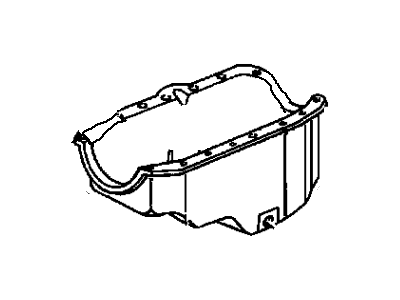
My Garage
My Account
Cart
Genuine Chevrolet K1500 Oil Pan
Oil Drain Pan- Select Vehicle by Model
- Select Vehicle by VIN
Select Vehicle by Model
orMake
Model
Year
Select Vehicle by VIN
For the most accurate results, select vehicle by your VIN (Vehicle Identification Number).
10 Oil Pans found
Chevrolet K1500 Pan,Oil
Part Number: 12557558$174.95 MSRP: $301.79You Save: $126.84 (43%)Ships in 1-3 Business Days
Chevrolet K1500 Oil Pan
The Chevrolet K1500 vehicles have wet sump system where sum of Oil Pan is used to hold the engine oil. Oil pump sucked the oil in the pan to the components of the engine for lubrifying and cooling purposes before dripping again to the pan. First generation K1500 engines were commonly of stamped steel While modern engines, the oil pan can be of cast aluminum ones. The oil pan plays an essential role in supplying oil to the engine and preserving the oils from leaking, which helps to have an appropriate working and performance of the engine. Also, the oil pan design allows for a solution of the problems like oil starvation during energetic cornering, and delivers constant oil supply to the engine for its maximum efficiency.
Each OEM Chevrolet K1500 Oil Pan we offer is competitively priced and comes with the assurance of the manufacturer's warranty for the part. Furthermore, we guarantee the speedy delivery of your orders right to your doorstep. Our hassle-free return policy is also in place for your peace of mind.
Chevrolet K1500 Oil Pan Parts Questions & Experts Answers
- Q: How to remove and install an oil pan on Chevrolet K1500?A:Disconnect the negative battery cable to start the removal process, and jack up the vehicle on jackstands so that it is secure. To begin with, drain the engine oil and then remove the oil filter. If applicable, remove bellhousing cover strut rods and front engine mount strut rod brackets to unbolt crossover pipe from Exhaust Manifolds. In addition, remove engine oil cooler or transmission cooler lines from oil pan when necessary. If clearance needs it take off lower bellhousing cover and starter. For 4-wheel drive vehicles do this by removing the skid plate first, followed by removing front driveshaft; also remove some of the bolts/nuts for front driveaxle. Take out wheel leftwards towards rotating drive axle forward in order to pull out front axle shafts. When you have a big block VS engine which has an oil pressure gauge line on one side of its block; you should disconnect it first before removing distributor cap to avoid breakage then pull back fan shroud as far over fan as possible taking care not to damage radiator fins with cardboard if there is little room. Lift engine about three inches using an engine hoist after removing through-bolts from motor mounts ensuring oil pump pickup isn't damaged, distributor doesn't hit firewall, and fan doesn't hit radiator. Put wood blocks between crossmember & engine block to hold raised position then remove engine hoist thereafter. Positioning all engines in such a way that crankshaft's timining mark on vibration damper is at bottom continue by unfastening pan bolts & reinforcements tilting rear of pan down away from crankshaft throws, oil pump pick-up and front cross-member as well as towards bottom away from them also works well Note: for installation use a scraper tool which eliminates old gasket material and sealant from both pan plus block hence clean sealing surfaces via lacquer thinner or acetone while ensuring clean bolt holes in block are made Check pan flange for distortion especially around bolt holes and if so correct it Remove old rubber seals from rear main bearing cap and timing chain cover, clean grooves, install new seals (except engines with one-piece rubber gaskets), use RTV sealant or gasket adhesive to hold the new seals in place then apply RTV to block-to-seal junctions Apply the same sealant to the oil pan side gaskets when applicable Examine the one-piece rubber gasket, discarding it if it is damaged Use RTV silicone on all four corners of the pan gasket; being careful to go at least an inch in each direction from the corner; attach gasket to oil pan Carefully align pan against block, finger-tighten bolts/nuts (including reinforcement strips as required), and ensure that seals/gaskets haven't shifted before tightening them starting at center of pan & working outwards in spiral pattern in 3 steps ending with specified torque Finally, replace all parts in reverse order but never forget about filling engine with oil before starting it.
